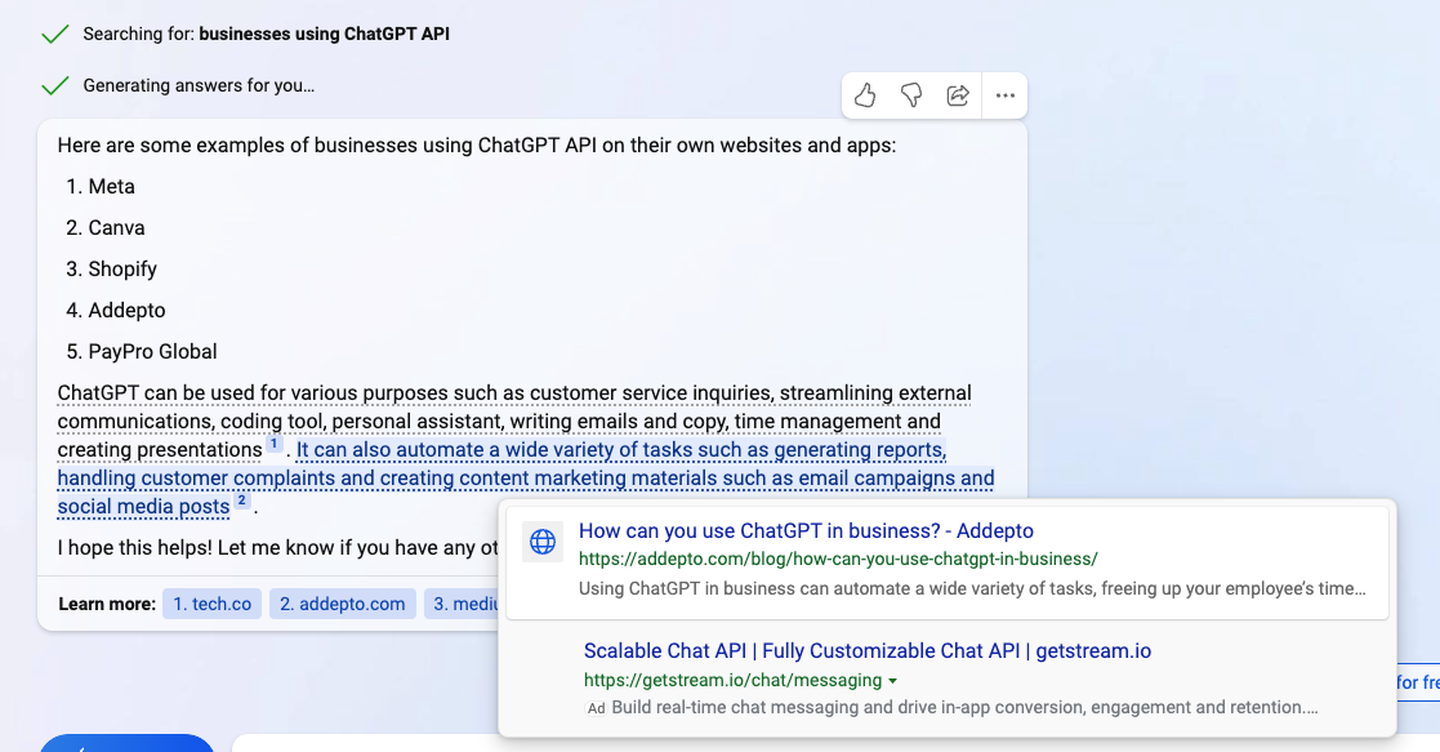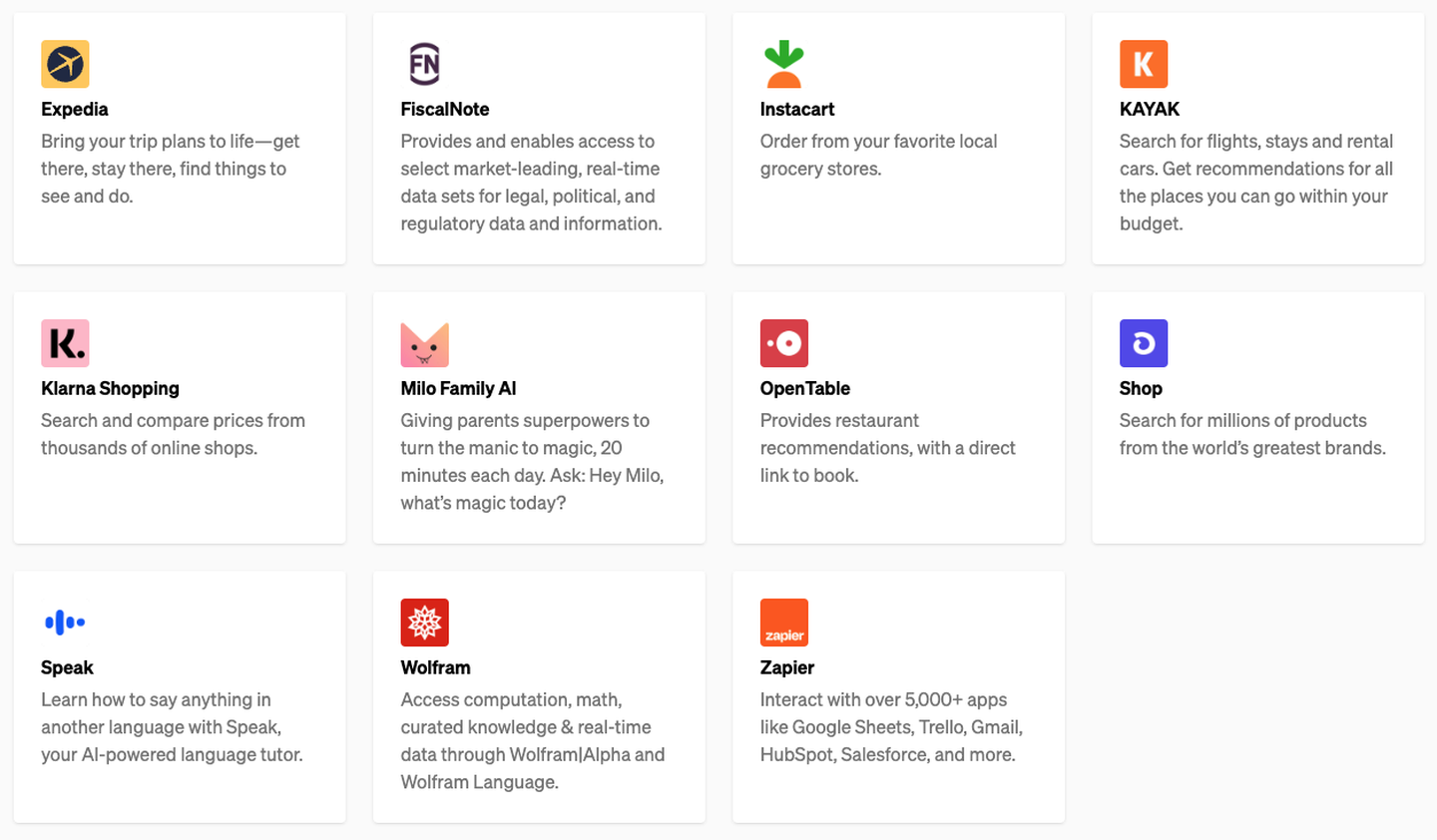Generative AI is changing the way we think about artificial intelligence, and everyone is talking about it. OpenAI’s ChatGPT reached 100 million monthly active users in January 2023, just two months after launching. Google and Microsoft have both launched their own generative AI services in the past few months. And in the meantime, a vast ecosystem of specialist startups is starting to emerge, using the technology in creative applications such as copywriting, code generation, art generation, gaming and design.
In this article, we explore three ways in which generative AIs could represent a ‘platform shift’ – in the same way that PCs, mobile, internet and cloud have changed the behaviour and expectations of every business’s customers. As with any new technology at this stage in the ‘hype cycle’, views range from over-enthusiasm to outright scepticism. While it may be too early to draw conclusions – tech industry analyst Benedict Evans has argued that ‘Silicon Valley is still trying to work out what to think about this’ – we’ve seen some working implementations that can help businesses start to assess the potential for disruption.
1. Generative AI will become a layer which sits between every user and the search experience. How might that change how your business is discovered?
Search is the platform most at risk of disruption by generative AI. Microsoft has leveraged its investment in OpenAI to push ‘the new Bing’ (strapline ‘Your AI-powered copilot for the web’). Google followed swiftly with the launch of Bard (even if the first demo exposed some flaws in accuracy).
Given how important SEO is for businesses in every sector, we think it’s worth taking a closer look at the implications of this shift. Below, we compare the user journey of traditional search (e.g. via Google or Amazon) with the current wave of conversational AI interfaces:
Step 1: Asking a question
Where we might typically search using a computer-friendly term (e.g. ‘vegan restaurants London’), with generative AI we are able to ask questions using natural language. Chat interfaces (like ChatGPT, Bard and the new Bing) have shown that we can ask far more complex and nuanced questions.
In both traditional search and generative AI, typically users make further queries in order to refine the results or explore the topic further. However, a service like ChatGPT uses a more intuitive and frictionless conversational format (for example, the chatbot can remember and respond to the conversation history). This has the potential to lead to a dramatic shift away from search as we know it, at least for certain types of queries.
Step 2: Receiving a response
In traditional search, the output is a list of links to web pages (which businesses can influence via SEO and sponsored links). Instead, an AI language model service will provide a singular answer, potentially with a set of ‘citations’ that helps users validate or explore the answer in the background.
Generative AI is also capable of synthesising outputs in a variety of formats (e.g. tables, reports, email content, poetry, computer code – or even a traditional list of linked search results).





Step 3: Conversion
Typically, the end of a search journey for users has been a third-party webpage. Chat interfaces reduce the importance of this destination to the overall experience. For e-commerce, the final ‘conversion’ for businesses currently happens after users click through to their webpage. As we explore below, these conversational interfaces are starting to incorporate functionality that shifts the moment of conversion to the chat interface, performing certain tasks autonomously in pursuit of your high-level goal.
The value of appearing in traditional search rankings spawned a lucrative SEO industry. Media executive and investor Troy Young has argued that a shift in gravity to these interfaces might mean that ‘Search Engine Optimization morphs to Chat Bot Optimization.’
This is likely to have big implications for ads, which seem likely to become more integrated into non-ad content (this trend has already started to emerge on social platforms with the rise of Instagram influencers). It remains to be seen exactly how businesses will optimise their presence in conversational AI, but it’s becoming increasingly important to plan for that shift.
Questions for your business:
- How can our brand show up in AI-generated answers?
- What information will be surfaced?
- How can we ensure that information is up-to-date and accurate?
- Will our customers expect to ‘convert’ away from our own website and apps?
2. Generative AI chatbot services are launching app stores, equipping AI interfaces with software-based tools they can decide to use autonomously. How might this represent a risk or opportunity for your business?
The first wave of large language models was impressive, but there were some functional limits – you might be able to ask them a question about a topic, for example, but they couldn’t access live data or perform actions outside of the chat interface.
That changed in late March, when OpenAI launched a plugins library for ChatGPT. This allows ChatGPT users to access external capabilities from within the interface. One early video of the service in action (see below) shows a user installing plugins by OpenTable, WolframAlpha, and Instacart. ChatGPT is then able to browse the web to find restaurant recommendations (via OpenTable), build a recipe based on a popular dish, calculate that recipe’s calories (via Wolfram Alpha) and then order the ingredients (via Instacart).
Plugins also represent one way that Generative AI might be relied upon to give answers based on up-to-date, high-quality data (a feature missing from most services until now). For example, global policy and market intelligence provider FiscalNote has created a ChatGPT plugin that allows people to access real-time data sets (e.g. legislation). The potential here is that Generative AI can gain more legitimacy among its users, overcoming some of the current fears of inaccuracy and hallucinations.

It remains to be seen whether other services (like Bard), will introduce plugins into their own interface. Of course, these are early days – plugins are only available to beta users, and until we have more data it’s hard to judge the success of this initiative. Upon seeing the news, tech industry analyst Benedict Evans commented: ‘Wondering if chat GPT plug-ins are the new App Store or the new Alexa skills. And, by extension, an admission that this is orders of magnitude less powerful than it looks.’
While we wouldn’t necessarily advise businesses to divert vast resources into creating their own plugins for external AI services, we do think it’s worth keeping an eye on how this develops. After all, a plugin library (or something like it) might be the best chance your organisation can gain traction in a world where people are spending more time in conversational interfaces.
Questions for your business:
- What might the consequences be if one of our competitors launched a plugin before us?
- What unique functionality or information could we make available?
- What value could a plugin unlock? How could you monetise?
3. Generative AI could alter the UX stack of any piece of software. How might this technology improve the experience of your own apps and websites?
Instead of appearing in someone else’s generative AI interface, what if your existing products and services were supercharged with the technology? For example, a media company might allow subscribers to ask further questions about a news story straight from their own app’s interface. Some of the functionality that you might be able to introduce to your own services includes:
- Sophisticated automated conversational interactions
- Autocomplete to assist creation of user-generated content
- Personalise an experience or content in real time
- Manipulate language in terms of style and structure
We’re already starting to see examples of what this might look like. For example, in March Microsoft announced the launch of Copilot, a tool that ‘combines the power of large language models (LLMs) with your data in the Microsoft Graph’. This service will be embedded across existing Microsoft 365 apps like Word and Excel, allowing users to write prompts like ‘Make the third paragraph more concise’ or ‘Model how a change to the growth rate for [variable] would impact my gross margin’ to receive AI-powered suggestions. Copilot will also power a new service called ‘Business Chat’, which allows workers to provide prompts such as ‘tell my team how we updated the product strategy’ and receive status updates in response.
Adobe has made a similar move with Firefly, a generative model that will be directly integrated into Creative Cloud. Firefly allows users to write prompts to generate images, audio, vectors, videos and 3D – as well as creative elements, like brushes, colour gradients and video transformation.
The good news is that these capabilities are not limited to tech companies with large teams of AI specialists. Thanks to the power of APIs, it has become possible for most software development teams to enhance apps and services with generative AI capabilities. For example, OpenAI’s API allows developers to leverage the core functionality ChatGPT and Dall-E.
Much like Google Maps became ubiquitous across many businesses’ websites and apps, users may come to expect these generative capabilities as standard. Former Microsoft exec Steven Sinofsky has argued that: ‘in the next 6–12 months every product (site/app) that has a free form text field will have an “AI-enhanced” text field. All text entered (spoken) will be embellished, corrected, refined, or “run through” an LLM. Every text box becomes a prompt box.’
It’s a fascinating provocation. And although we’d advise all businesses to balance optimism with healthy scepticism, experimenting with these capabilities may cost less than you might think.
Questions for your business:
- How might generative AI add value for our customers?
- Where might generative AI show up in our existing website, apps and software?
- How might we mitigate the risks of sharing our data with one of these APIs?
FT Strategies can help you plan for a future where generative AI changes customer expectations
Our team can help you make sense of the fast-moving world of generative AI. We invite you to get in touch if you’d like to continue the conversation.

